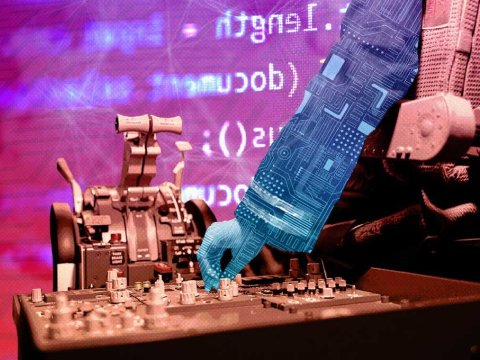Don’t Let Security Derail Your Modernization Projects
Navigate the complex landscape of cloud modernization with an adaptive security strategy and cloud security tools that help to minimize human error.
One of the biggest challenges companies face as they move into the multicloud era is grappling with an IT environment that is suddenly lacking in clearly defined boundaries.
As organizations harness the power of the cloud to modernize their operations, streamline processes and enhance customer experiences, they also find themselves wrestling with the complex task of safeguarding their digital assets and maintaining security in an era when the technology perimeter is constantly shifting, transformation projects are extending across diverse platforms and technologies, while workloads exist in a multitude of locations.
This intricate shift necessitates a new way of thinking about security—one that adapts seamlessly as the perimeter expands. It will also require a fresh look at the role that tools, people and organizational structure play in ensuring resiliency.
Navigating cloud security tools: choosing the right one for your specific needs
While an abundance of exceptional cloud security tools is available today, each comes with its own set of strengths and limitations. Some are offered directly by hyperscalers, while others originate from third-party suppliers. Organizations should assess which tool best fits their needs and security requirements. A key consideration in their decision-making should be whether the selected tools can smoothly accommodate a variety of operations.
The core tools should be centered on establishing a robust security foundation, including critical elements such as identity and access management, compliance adherence, governance, proactive reporting and heightened awareness. In addition, organizations should consider tools that give them centralized control over network access and security events through a message bus or service bus’– a communications protocol that allows different systems to communicate through a shared set of interfaces.
Beyond the mouse click: reduce the risk of human error in security
As organizations think about the security tools that are right for them, they shouldn’t overlook the human element. Human error can never be fully eliminated from the security equation, but you can implement measures that can reduce the likelihood and repercussions of inadvertently performing an unintentional security action.
In addition to improving cybersecurity training programs and reinforcing best practices, the landscape is now dotted with tools that companies can seamlessly integrate, streamlining their code deployment process while prioritizing security.
One of the most critical potential vulnerabilities these tools address is deployed code and the exposure of intellectual property. Continuous Integration/Continuous Deployment (CI/CD), a software development protocol that safeguards against the pervasive specter of human errors that often plague traditional “click ops,” is one such example.
Automation introduced at every stage of app development will increase efficiency, enhance security, improve code quality and reduce the chances of manual errors causing security vulnerabilities.
Rethinking the security operations team
A third major consideration for organizations evolving their security posture in the multicloud era is the structure of the security team itself. Increasingly, we are seeing organizations rethinking the composition of their security operations centers (SOC) and reconsidering who should be part of the team. In an increasingly complex environment, maintaining a siloed security function divorced from operations has the potential to expose companies to greater cyber risk.
As a result, we are seeing more and more companies establishing agile teams that embed security experts with operations leaders, baking security into the development process and organizational architecture, rather than thinking about it as an “after the fact” damage limitation exercise. Security teams that are not embedded into delivery processes tend to create arbitrary gating that encourages subversion or lack of ingenuity. Instead, embedding security engineering or uplifting staff to be adjunct security experts distributes the security point of view while pacing with the speed of business.
As companies continue their cloud transformation journeys, they will need to balance progress and protection, by harnessing new tools, prioritizing training, and taking a critical look at who has a seat at the security table. Those organizations that can constantly evolve their security posture as the borders of their IT environments expand will be well-positioned to reap the full benefits of modernization initiatives.

The 2023 Cybersecurity Research Report
About the Authors

CTO - Public Cloud
Travis Runty
As a technologist with extensive global leadership experience in the cloud space, Travis boasts a strong track record of successfully building and leading high-performance engineering teams that deliver innovative solutions. Fostering an engineering culture has resulted in a collaborative, agile, and customer-focused work environment that consistently achieves business outcomes. With a deep understanding of hyperscalers, Travis effectively creates partnerships and aligns solutions to leverage their strengths, driving significant revenue growth and improved customer satisfaction. Committed to organizational success, Travis employs a strategic approach that harnesses emerging technologies and focuses relentlessly on delivering customer value. Travis has been in the Cloud Computing space for nearly 20 years.
Read more about Travis RuntyRelated Topics



